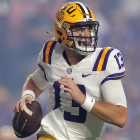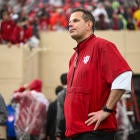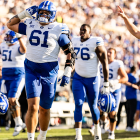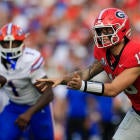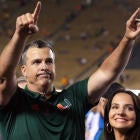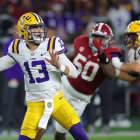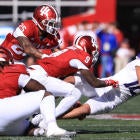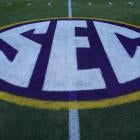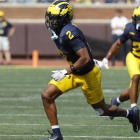The University of Alabama at Birmingham has entered into a partnership with Seattle-based tech company VICIS in an attempt to create safer football helmets.
UAB engineering professor Dean Sicking, who helped develop safer walls in auto racing and national highways, has studied for several years how to use automobile technology to reduce concussions. Now UAB is teaming with VICIS, which has a similar relationship with the University of Washington and plans to test its Zero1 helmet this spring.
Most of college football's top 25 teams will evaluate the Zero1 during spring practice, and more than 10 NFL teams are trying the helmet in offseason training sessions, said Dave Marver, CEO of VICIS. UAB is expected to try the helmet when its football program returns in 2017 after a two-year absence.
"The biggest challenge right now is we really don't know what causes concussions," Sicking said. "We can make a helmet that's much better. ... But we don't know exactly how to get there and that's going to take some significant research, and that's the biggest problem facing us today."
Oregon and Washington briefly tested the Zero1 last August before the helmets were pulled for refinements. Marver said some players experienced forehead discomfort, and the chinstrap became detached too often.
"The helmet is now testing better than ever," Marver said.
UAB declined to provide the financial terms of the partnership with VICIS. The two parties will share expertise and intellectual property. Marver said UAB will share in royalties with VICIS and those funds will flow back to the university to support additional research, similar to VICIS's relationship with Washington.
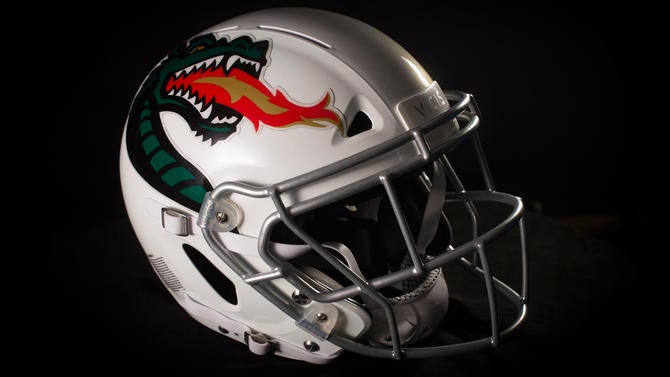
Currently, the Zero1 helmet is priced at $1,500 and aimed for NFL and college players. Marver acknowledged the cost is high for high schools and youth leagues and hopes to reduce the price through supply demand.
"We went about this to build the best possible helmet, not necessarily an inexpensive helmet," Marver said.
Dr. Robert Cantu, a leader in sports concussions, said the difficulty to improve helmets is reducing the rotational and linear acceleration of the head. Because the head is affixed to a rigid neck and torso, the violent change in velocity from the whipping of the head upon impact stretches and shears fibers inside the brain.
"No helmet's going to eliminate that," said Cantu, who has not seen the data for the Zero1. "The forces are just too great. I don't think helmets will ever be the sole answer. But can they get better? Yeah, I think so. I don't know by how much concussions can be reduced, but I think it's worth working on. The NFL has bet 60 million bucks on that."
Last September, the NFL announced a $60 million commitment toward developing technology, such as improved helmets, and another $40 million over the next five years toward medical research. VICIS has raised $28 million on its own through 2014, Marver said. Roger Staubach is an investor and Tony Dorsett and Jerry Rice are consultants for the company.
The idea of the helmet is that it conforms upon impact to slow impact forces before they reach the head and brain. One of the primary mechanisms is a layer of columns designed to absorb straight ahead impact and rotational impact.
"We've tested efficacy against linear and rotational hits and it performs quite well," Marver said.
Football helmets have traditionally used polycarbonate shell on the outside. Marver declined to identify what different material VICIS uses for a more flexible helmet to absorb more energy. The results of how much energy the Zero1 absorbs will become public in March after it's tested by the NFL and NFL Players Association, Marver said.
"Long term, I think we can make gigantic advances in helmet performance and virtually eliminate concussions long term," Sicking said. "You'll never be able to prevent them, but if you put the science behind the process, I think the sky's the limit. But that will be a long time. It's not going to happen this year, next year, anytime soon. It's going to take some basic research to identify exactly what type of distortion is causing the injury."
This is a different test for Sicking, who spent 35 years improving car safety. After the death of NASCAR legend Dale Earnhardt in 2001, Sicking developed the collapsible wall used by major speedways in auto racing.
At one point, almost every new guardrail terminal installed on the National Highway System was covered by one or more of Sicking's patents. He has estimated the guardrails save 1,000 lives per year. But football has proven to be a different animal for Sicking.
"With car travel, I have an advantage because I've been doing it so long, and I had a position industry-wide where when I want to do something, I can usually generate the money and the research to make it happen," Sicking said. "It's been much harder to get the funding [for football helmet technology]. That's our biggest barrier right now -- getting the funding for basic research that's going to help us identify the injury mechanisms."








